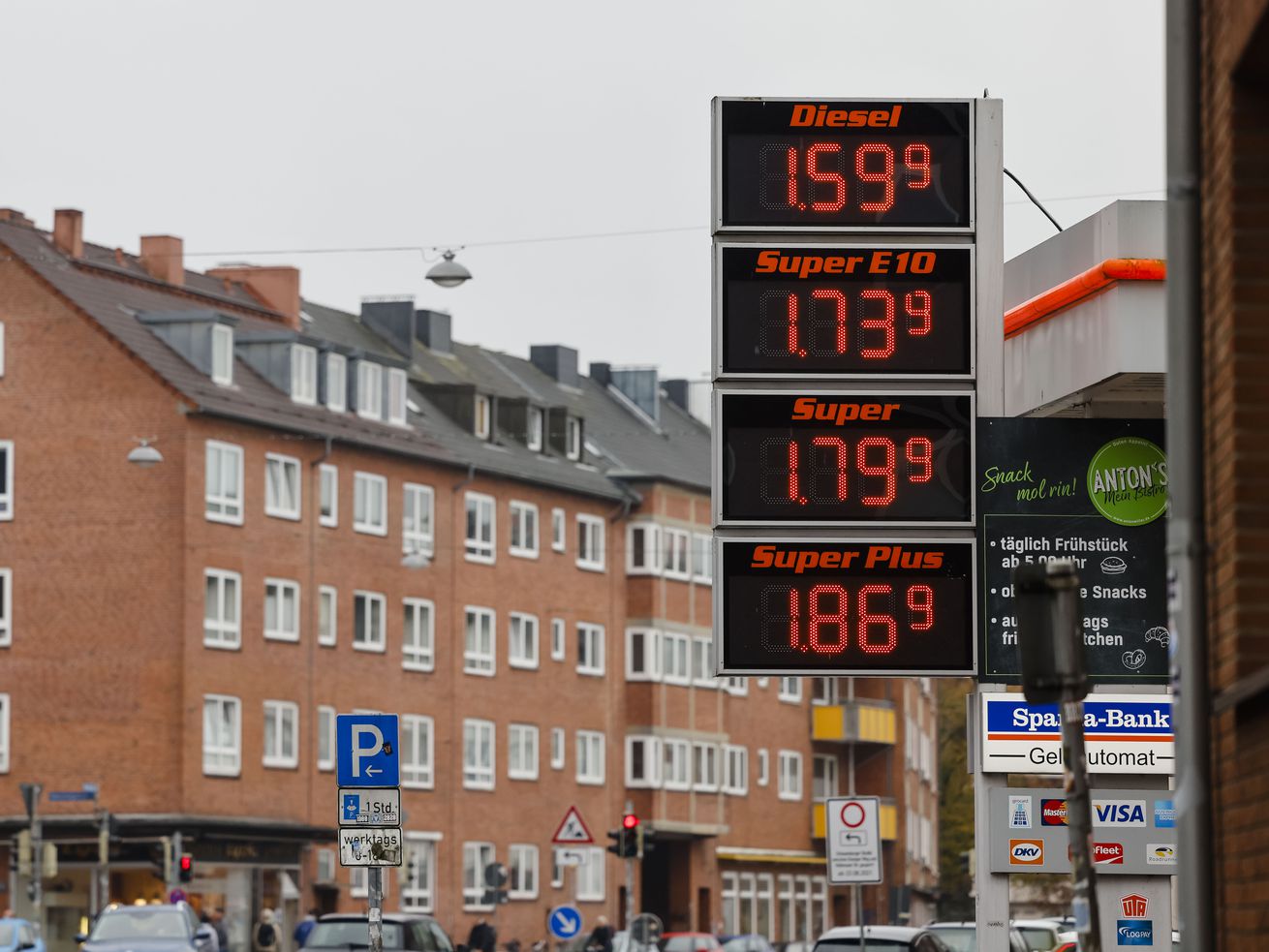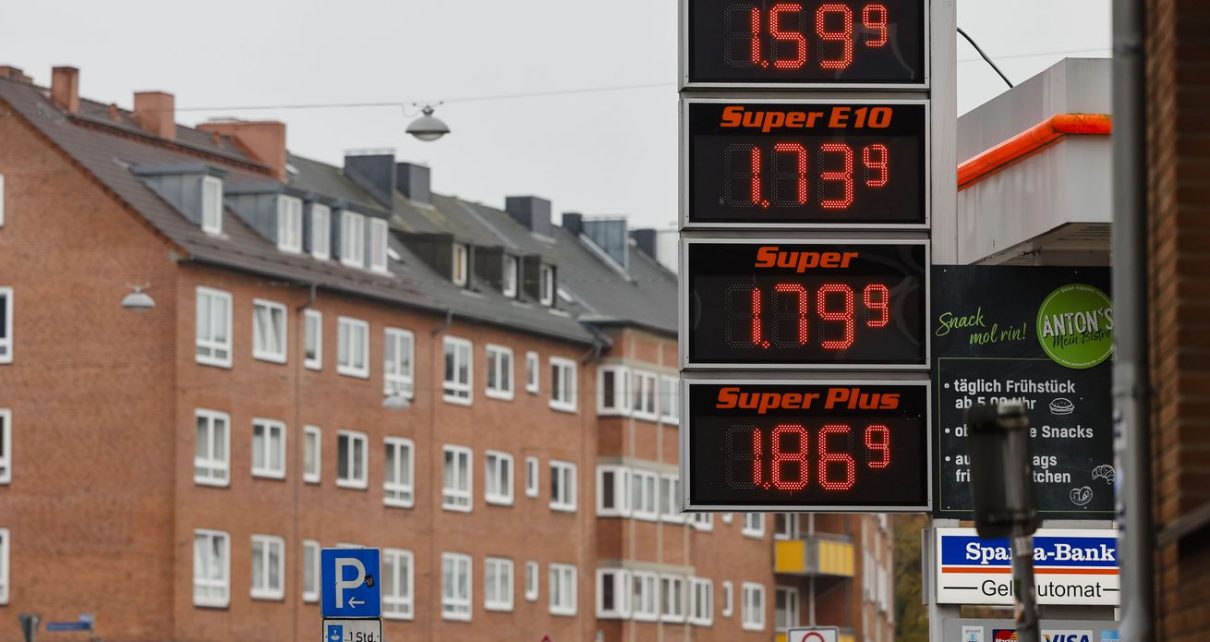
Supply chains are screwing with prices for a lot of the world.
In the United States, it’s the gas and Thanksgiving dinner and holiday toys. In the United Kingdom, it’s the energy costs and snacks and Uber fares. In Brazil, it’s the cost of food. In Germany, it’s fuel, rent, and electronics.
Consumers around the world are seeing higher prices for goods and services, and though some reasons for this vary by country, inflation is turning into something of a worldwide phenomenon.
In the US, the Consumer Price Index (CPI), which tracks what consumers pay for goods and services, rose by 6.2 percent in October compared to a year ago, the fastest increase since 1990. But other parts of the world are also seeing bumps: the eurozone (all countries using the Euro) saw its inflation at about 4.1 percent, the highest in 13 years.
Covid-19, which has wreaked havoc on global supply chains, gets a lot of the blame for this. “Underneath it all, the key theme is a Covid disruption,” said Gregory Daco, chief US economist at Oxford Economics. “That’s the key reason why we’re seeing inflationary pressures around the world.”
It turns out, the global economy can go a little haywire when a once-in-a-generation pandemic rolls around. The virus scrambled supply chains, squeezed off international travel, and shut down businesses and services. Now, even as the world is recovering from these shocks, Covid-19 is still surging and resurging, and combined with other disruptions — like climate-related events — supply chains are still trying to sort themselves out.
“There are country-specific reasons and issues, but if there’s one overarching factor playing into this, certainly what’s been happening in terms of global supply chain — which is a factor of the continued consequence of the pandemic,” said Matthew Sherwood, global economist at the Economist Intelligence Unit.
Covid chaos, then, takes the blame, but it’s not necessarily one-size-fits-all. Inflation dynamics are different, depending what country or region you’re looking at. It’s almost like post-Covid-economy bingo, where everyone’s playing the same game, but with different combinations on their boards. Sure, the Brits and the Americans are worried about gas prices and turkey shortages, but the price hikes on either side of the Atlantic might not necessarily be driven by the same issues at the same times.
Yet inflation is happening pretty much everywhere, said Gian Maria Milesi-Ferretti, a senior fellow at the Brookings Institution. It is being felt more acutely in some places more than others. This is true of developed economies, like the US or eurozone, which have seen big prices increase for the first time in years. And Milesi-Ferretti said inflation is also happening in emerging markets, even those that already had higher inflation pre-pandemic, like economies in Latin America. Its impact on consumers may vary depending on where the price increases are happening, whether in commodities (things like oil, or natural gas), or durable goods (like cars) or food.
“[Inflation] is everywhere but in different sectors and different times, since it comes from supply chain disruptions and that depends on when demand normalizes in each country and that depends on the pandemic,” Şebnem Kalemli-Özcan, professor of finance and economics at the University of Maryland, wrote in an email.
And because the pandemic has been anything but dependable, the question of when this volatility ends is a difficult one to answer. Some economists and experts think these supply chain disruptions will last into 2022, maybe even 2023, which may keep inflation up. And more than the actual price increases, experts said, the biggest concern is inflation expectation — basically, if consumers and businesses think inflation is here to stay, they could adjust their behavior accordingly, which makes it more likely that inflation could stick around long-term, wherever it’s happening.
A look at inflation around the world
The (unnecessary) run on toilet paper at the start of the pandemic was probably an omen for all the economic weirdness to come.
Covid-19 led to a shutdown of supply — for example, manufacturing and production halted because of Covid-19 restrictions. At the same time, the pandemic completely flipped demand. Suddenly, no one was buying airplane tickets or booking cruises, but people wanted a new desk or lawn furniture or lumber to renovate their homes. “You have this combination of supply disruptions together with very unusual, very high demand,” Milesi-Ferretti said.
At the same time, the dramatic pauses economies saw at the beginning of Covid-19 have not been as long-lasting as initially feared. Economies are improving, and they have done so at a healthy clip, especially in places like the United States and Europe. But as economies are ramping back up, they’re doing so at a pace where supply and shipping and transportation can’t quite keep up.
And for every time Covid-19 has receded, it has also seemed to peskily come back; there was the boom of vaccines, and the bust of the delta variant. All of this volatility and uncertainty continues to hit supply chains.
“Because we have desynchronized global recoveries, because we have pockets of new waves of Covid hitting different places around the world at different times, supplies are not coming back online in a uniform manner,” Daco, of Oxford Economics, said. “And so you’re seeing these pockets of price pressures that are feeding through to the different places around the world.”
This is a global issue, and as experts said, depending on how strong the demand is in certain places, or how strong or weak the supply is, individual economies have slightly different flavors of inflation.
Take the United States. Experts said, broadly, these pressures exist because the existing supply chains can’t keep up with demand. The United States economy is actually in pretty good shape, even if the public doesn’t necessarily agree. All those checks that went out as part of the US’s stimulus packages gave people cash to spend. That has accelerated the US recovery, but from materials to manufacturers to shipping ports, the supply chain is scrambling to keep pace with US consumers who want to buy new computers or cars.
In Europe, and elsewhere, it’s a slightly different picture. Those places, too, are seeing the cost of goods rising. The United Kingdom, for example, saw its CPI rise to 4.2 percent in October over last year, the highest rate in 10 years. Germany saw its October CPI rise to about 4.5 percent over a 12-month period, the highest since August 1993. Experts said demand is part of it, but Europe is facing a lot of supply issues, too. They are dealing with supply chain bottlenecks, but also with high costs for things like energy and fuel, which can get passed on to consumers. In the UK, for example, surging energy costs are driving the price increase. In Germany, energy price hikes — which probably won’t change anytime soon — are also pushing prices higher.
In Asia, experts told me, energy and raw materials costs are also rising, in part because of demand elsewhere in the world. That is putting pressure on producers, but so far, consumers have been somewhat insulated from those pressures. China saw a 1.5 percent rise in its CPI over last year, driven in part by the country’s recent power shortage. But consumers in places like Japan aren’t dealing with big price increases, at least not yet.
Other countries are feeling the squeeze, and some emerging economies may feel it even harder. Food and fuel prices are driving inflation in South Africa. Brazil is seeing double-digit inflation — in September, more than 10 percent over last year.
The United Nations Food and Agricultural Organization has also said food prices globally are now at their highest levels in more than a decade. According to the International Monetary Fund (IMF), consumer prices could rise about 4.8 percent globally in the next year. The United Nations has estimated that high shipping costs could push the prices higher by 1.5 percent, but with developing economies feeling the brunt of those price increases. According to the same UN report, prices could rise 2.2 percent for the world’s 46 least-developed economies, and some 7.5 percent for island nations like Jamaica, which tend to be pretty import-dependent.
A bit like Covid-19, the world is in this together. But also like Covid-19, the real costs of inflation will be felt a little differently, both among and within countries.
The good and bad news about global inflation
So the next big question is, how long is this all going to last? It’s probably best not make predictions when it comes to anything involving the pandemic. But one answer as to when this will end is straightforward: likely when the supply chain disruptions finally sort themselves out.
It sounds simple enough, which, of course, means it is not.
“It is temporary but it is taking longer as each sector demand and supply imbalance happens at different times,” Kalemli-Özcan wrote.
Basically, everything is out of sync, and demand in one part of the world can affect supply in another, and vice versa. Add Covid-19 to that, which, even with vaccines, is not fully in retreat. But it is getting there, and Milesi-Ferretti said the unusually high demand for goods will — “keeping fingers crossed” — likely retreat as well, as people begin to feel more comfortable going back to hotels or restaurants. Still, this can all make it hard to pin down exactly how “temporary” inflation might be in different parts of the world.
But most countries and consumers do share one big fear when it comes to inflation: the fear of inflation. Specifically, that inflation will last and become a more permanent thing. “The risk is that inflation becomes self-fulfilling,” Guy Miller, managing director and chief market strategist for Zurich Insurance Company in Switzerland, recently told the World Economic Forum. “The longer it remains elevated, the greater the risk that companies will be encouraged to increase prices further, and workers seek higher wages.”
This is the so-called “inflation expectation,” and is partly why inflation is such a salient political issue here in the US, and abroad. Trying to manage this is also tricky, because some of the tools central banks use — like raising interest rates — to curb inflation can also slow down economic growth, which could jeopardize or weaken the actual economic recovery from the pandemic.
“Long story short, the longer inflation sticks around, the more the central banks have to do, and the more that curbs growth, and could start leading to turmoil in financial markets,” Sherwood said. And that could trickle down to emerging markets and less developed economies, causing even more disruption as the world tries to recover from the pandemic.





